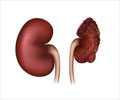Information about Streptomycin
Generic Name : StreptomycinUp-to-date prescription details regarding Streptomycin are provided here.
Pronunciation : strep-toe-MY-sin
Learn the correct pronunciation of the Streptomycin, understand it's uses, recommended dosages, its indications, how to take, when to take, when not to take, side effects, special precautions, warnings and its and its storage instructions.You will also find a list of the medication's International and Indian brand or trade names, as well as its pricing information. For verification of the information presented on this page or for additional clarifications, it's advisable to consult your doctor.
Trade Names/Brand Names of Streptomycin
India :
Why is Streptomycin Prescribed? (Indications)
This medication is an aminoglycoside indicated for the treatment of moderate to severe infections caused by susceptible strains of mycobacterium tuberculosis and other bacteria.When should Streptomycin not be taken? (Contraindications)
Contraindicated in patients with known hypersensitivity.What is the dosage of Streptomycin?
Tuberculosis: This medication is usually administered daily as a single intra muscular injection. A total dose of not more than 120 g over the course of therapy should be given unless there are no other therapeutic options. In patients older than 60 years of age the drug should be used at a reduced dosage due to the risk of increased toxicity.Streptomycin therapy should be terminated when toxic symptoms, organism resistant have appeared or when full treatment effect has been obtained. The total treatment period of tuberculosis is minimum one year.
Tularemia: One to two grams daily in divided doses for 7 to 14 days until the patient is feverless for 5 to 7 days.
Plague: Two grams daily in two divided doses should be administered intramuscularly. A minimum of 10 days of therapy is recommended.
Bacterial Endocarditis
a. Streptococcal endocarditis: In penicillin-sensitive alpha and non-hemolytic streptococcal endocarditis (penicillin MIC<0.1 mcg/mL), streptomycin may be used for 2-week treatment concomitantly with penicillin. The streptomycin regimen is 1 g twice daily for the first week, and 500 mg twice daily for the second week. If the patient is over 60 years of age, the dosage should be 500 mg twice daily for the entire 2-week period.
b. Enterococcal endocarditis: Streptomycin in doses of 1 g twice daily for 2 weeks and 500 mg twice daily for an additional 4 weeks is given in combination with penicillin. Ototoxicity may require termination of the streptomycin prior to completion of the 6-week course of treatment.
Adults: For moderate to severe infections, the recommended dose is 1 to 2 grams in divided doses every six to twelve hours. Doses should not exceed 2 grams per day.
Children: 20 to 40 mg/kg/day (8 to 20 mg/lb/day) in divided doses every 6 to 12 hours.
How should Streptomycin be taken?
It comes as a solution for injection as directed by your health care provider.What are the warnings and precautions for Streptomycin?
• Do not administer this medication in the absence of strongly suspected bacterial infection; this may increase the risk of the development of drug-resistant bacteria.• Extreme caution is needed in selecting a dosage regimen in the presence of preexisting renal insufficiency. Excess dosage may result in syndrome of apparent central nervous system depression in young adults.
• This medication should be injected well within the body of a relatively large muscle and care should be taken to minimize the possibility of damage to peripheral nerves.
• Caution should be exercised in patients with the history of vestibule, auditary dysfunction and pregnant women.
What are the side effects of Streptomycin?
Common - Nausea, vomiting, dizziness, rash, fever, burning sensation of face, hives, rapid swelling of the dermis and high eosinophil count.Less Common - Deafness, inflammatory skin disease, anaphylaxis, high levels of nitrogen compound, decrease in white blood cell count, decrease in platelet counts, reduction in the number of red and white blood cells, hemolytic anemia, muscular weakness and lazy eye.
What are the other precautions for Streptomycin?
• Take exactly as prescribed.• Do not take for long-term as it may result in another infection.
• Using in elderly patients requires strict monitoring because of the risk of serious side effects.












